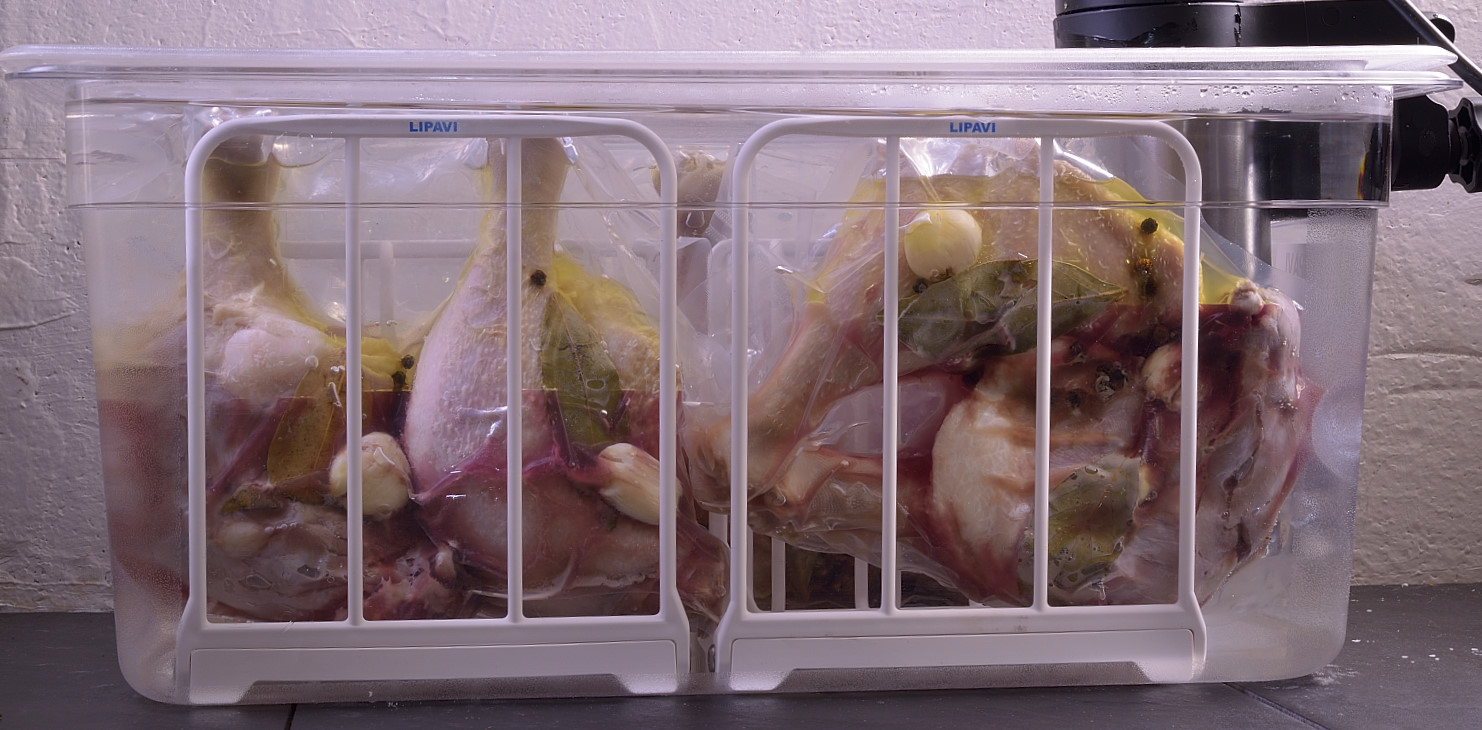
Above: Lipavi C20 container, N20 polycarbonate rack. Lipavi C20L lid.
Actual prep time, 1 hour
Level of difficulty: 2.75
Serves 1 per leg
Procedure:
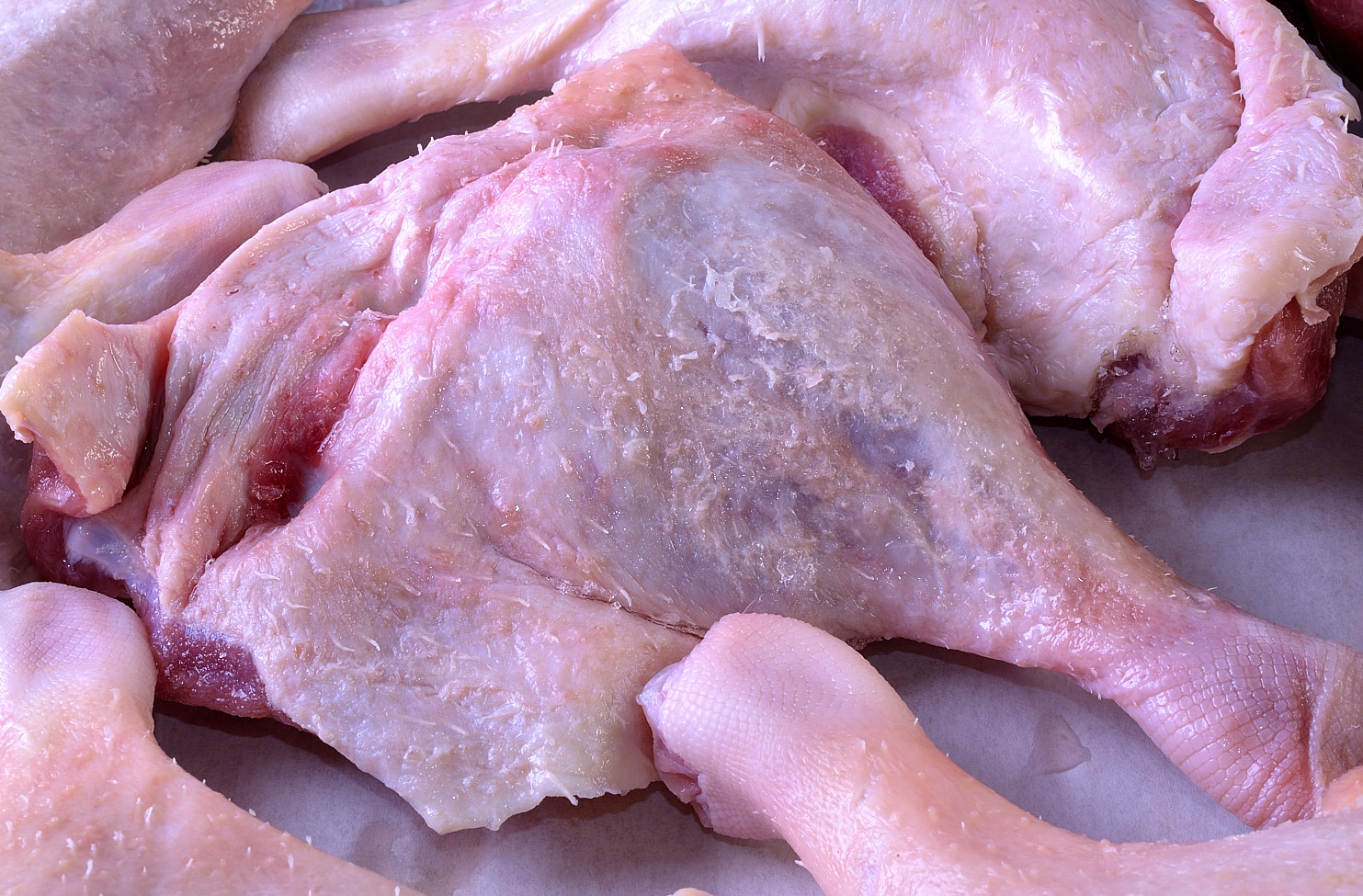
Apply kosher salt to the duck legs in the amount of 18g (2 teaspoons) per pound (450 g). Cover and refrigerate for 24 hours. Drain well and pat dry.
Preheat the sous vide bath to 183 F/84 C.
Place the leg(s) in pouches, each with a bay leaf, a few peppercorns and a clove of garlic. For important information about the use of fresh garlic in sous vide, visit HERE. Vacuum seal the legs in heat rated plastic, load into a rack and submerge fully into the bath.
Process at 183 F/843 C for 4 hours. This will fully denature the garlic in the bag. It also accelerates the rendering process. Lower the temperature in the bath to 155 F/68 C and continue processing for 24 hours.
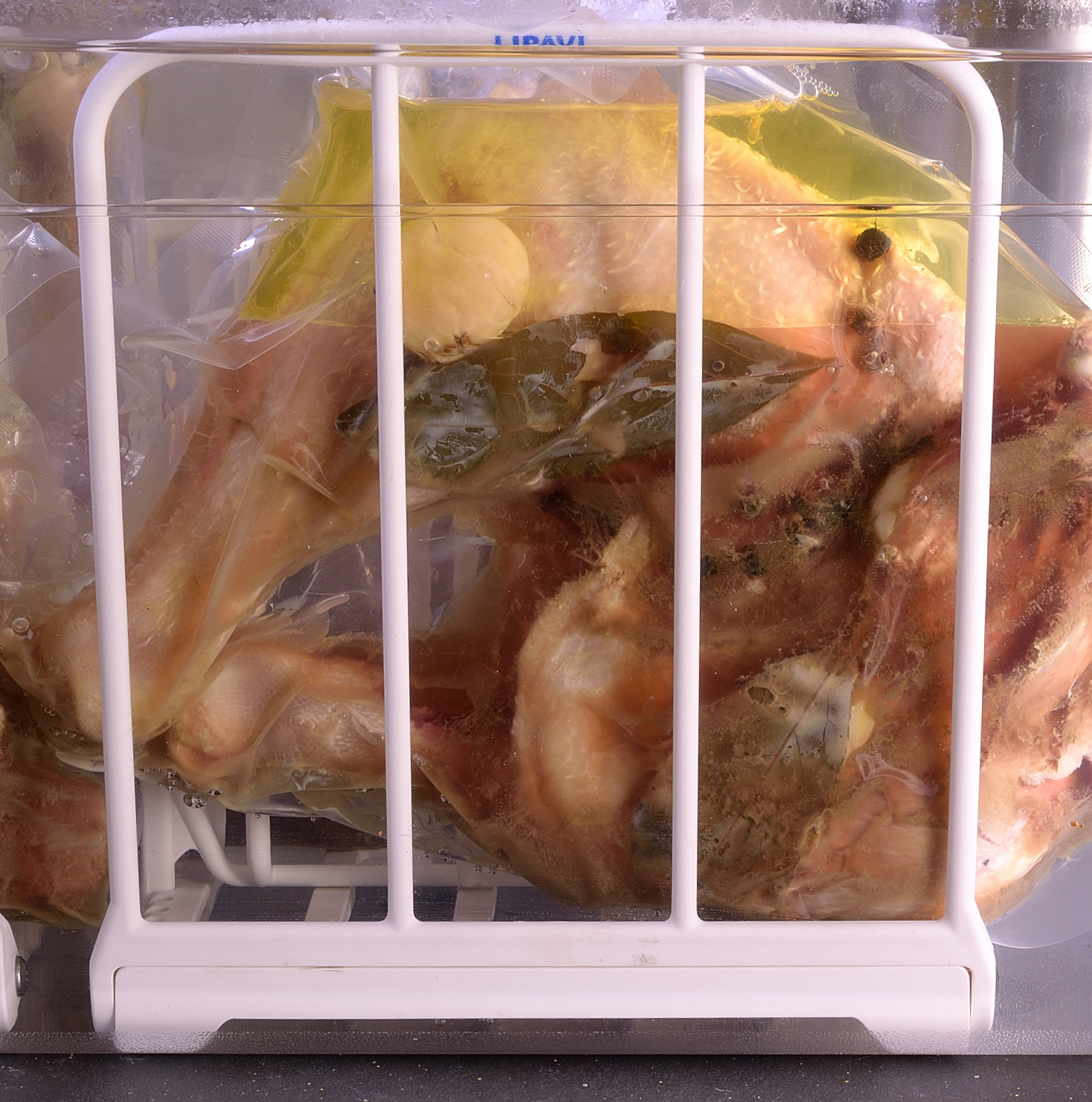
Once the interval has elapsed, cold shock the sealed package(s) in iced water until 70 F/21 C is achieved. Refrigerate at 40 F/4 C. Pasteurization will be maintained as long as the seal is not broken. The duck legs can remain safely refrigerated in this state for at least two weeks.
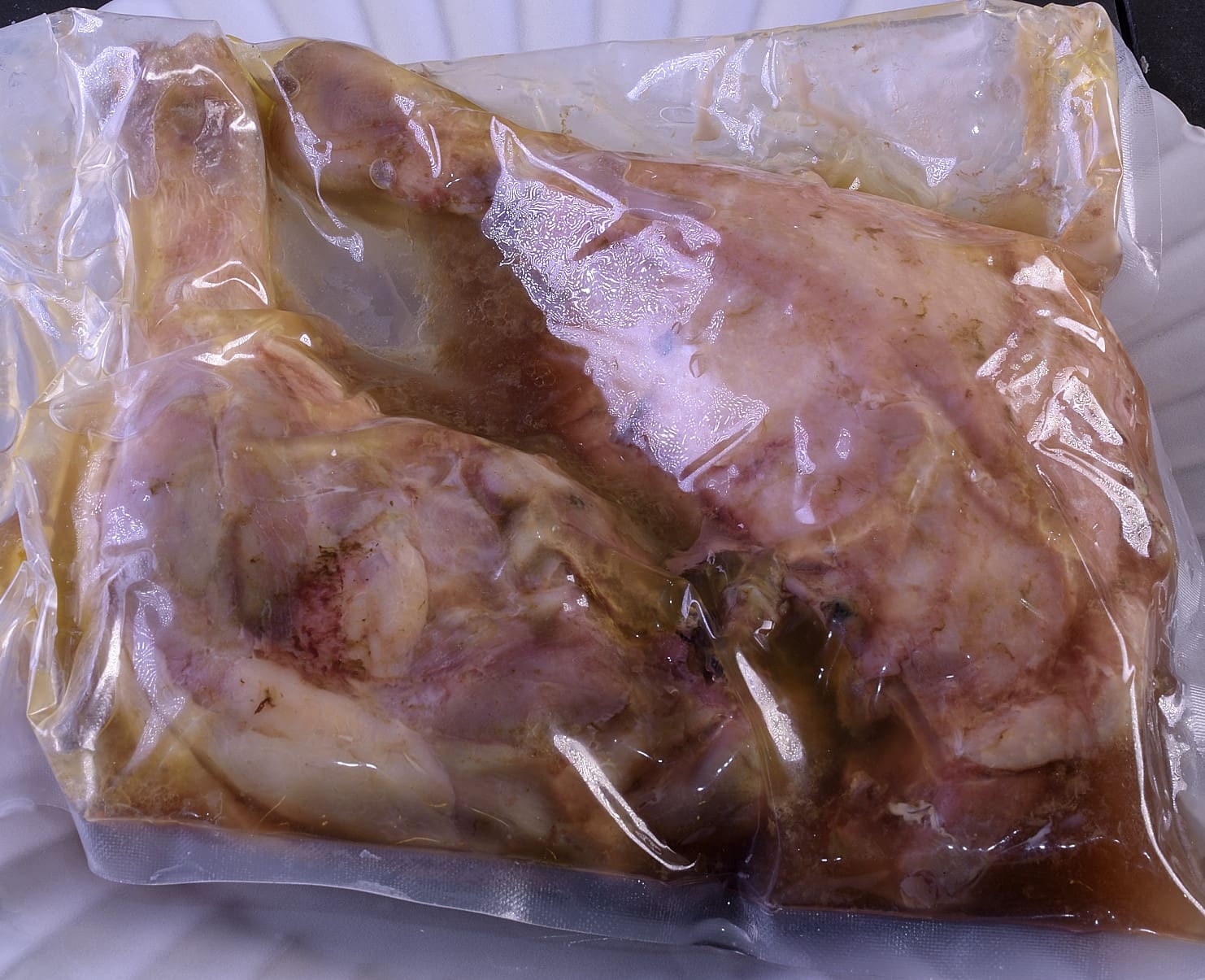
Remove the package from the refrigerator and dip in a hot bath long enough to melt the gel inside the package–no more than five minutes should be required.
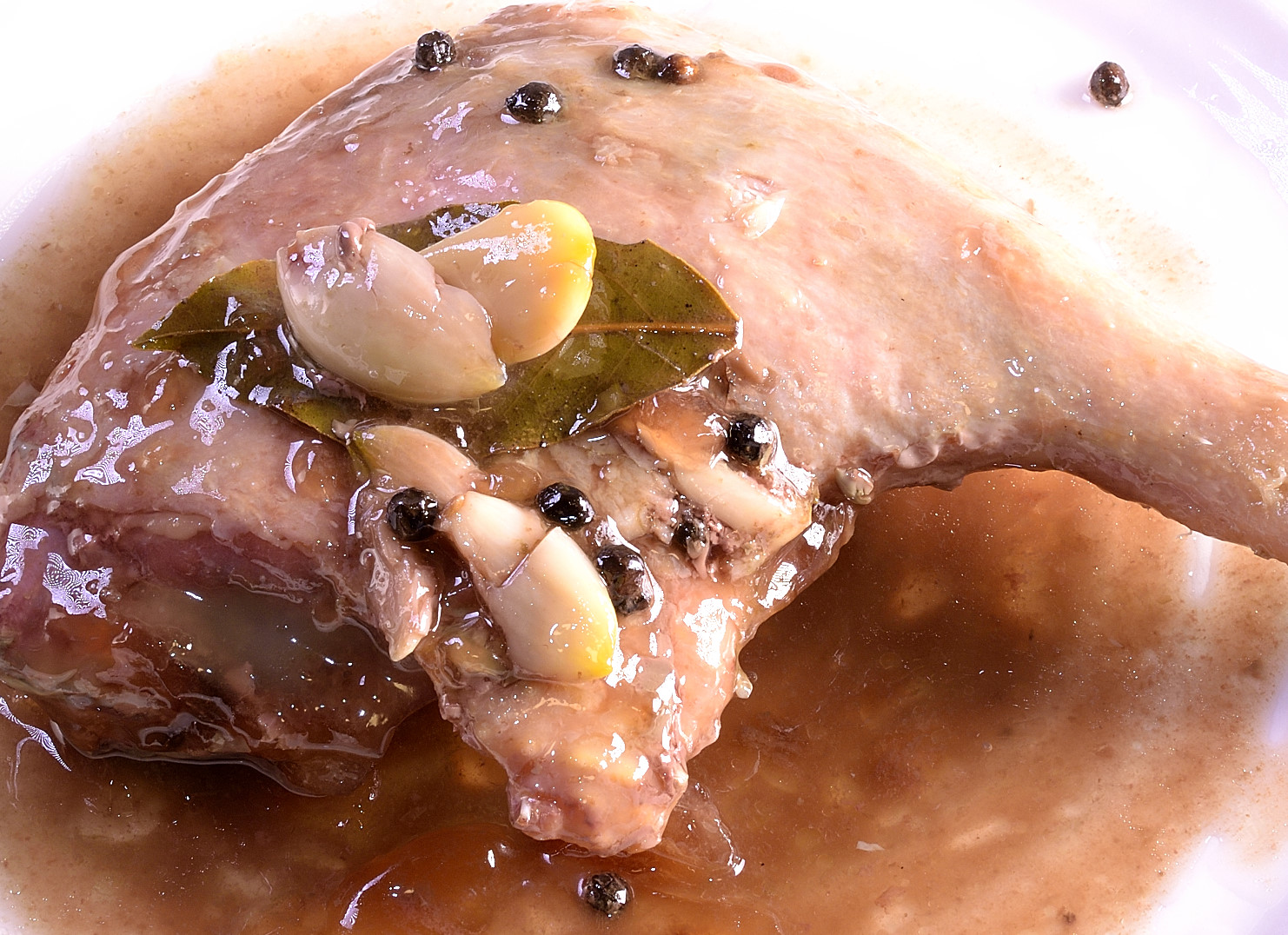
Empty the package onto a deep plate or other suitable container.
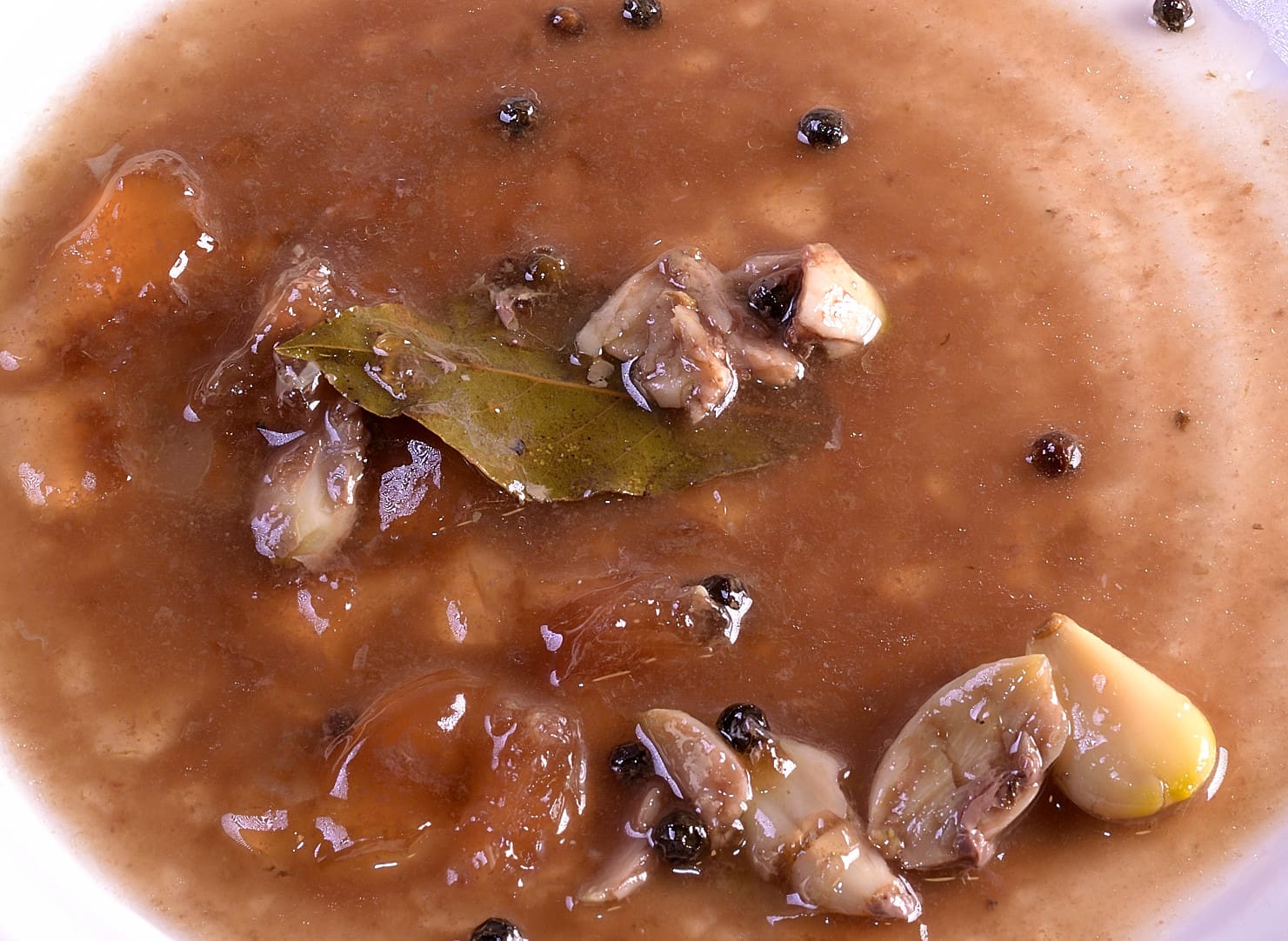
Clarify the juices as explained HERE and set aside for future use.
Use the broiler function of the oven to heat the leg and crisp the skin.
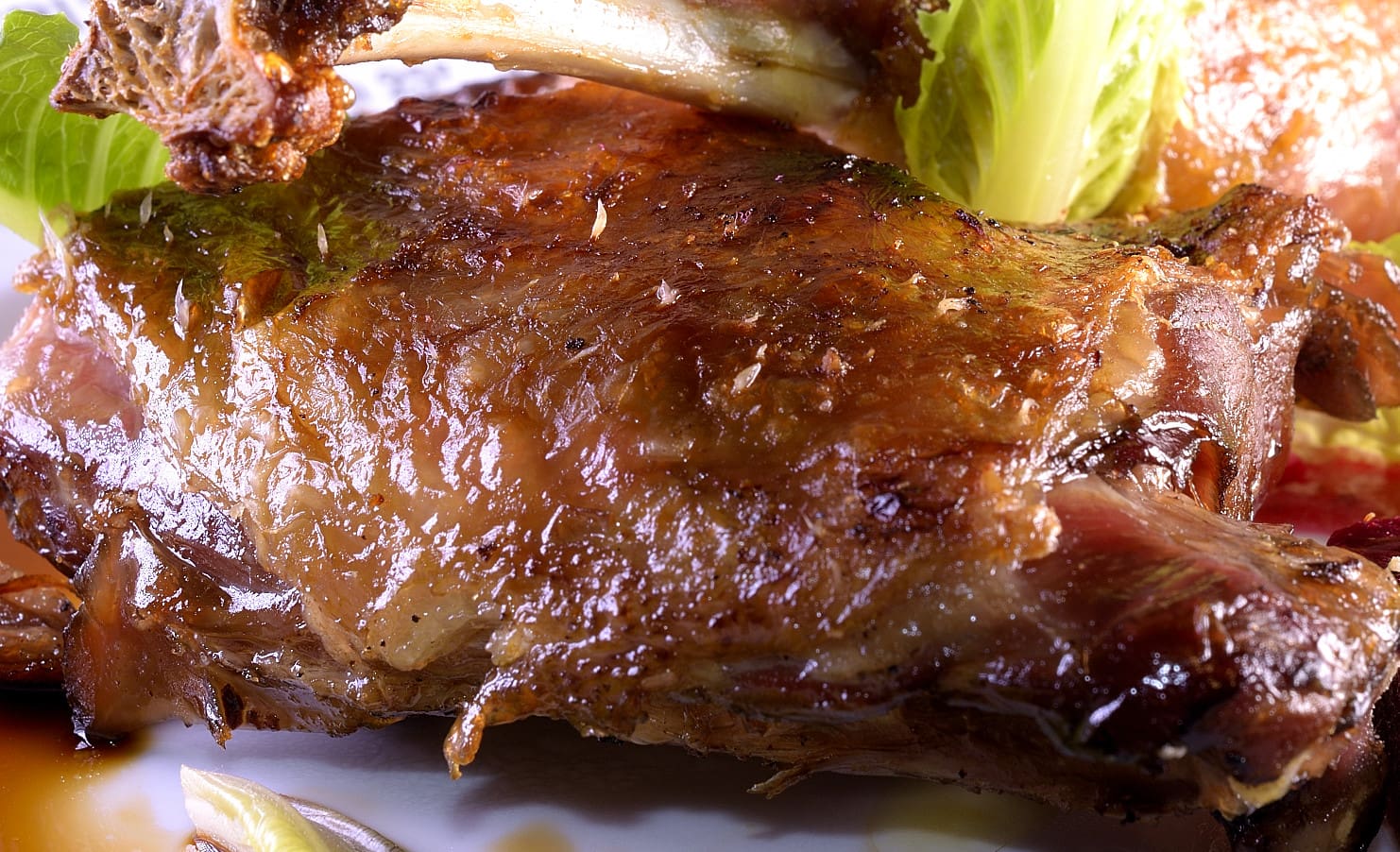
Remove the beet from the sous vide pouch and peel the skin by rubbing gently with a towel, wet or dry. Slice into desired shape and pat dry. Carefully place on the plate and do not move it to avoid color transference. Tip: set the towel aside, it will be heavily stained.

Drizzle the sauces.
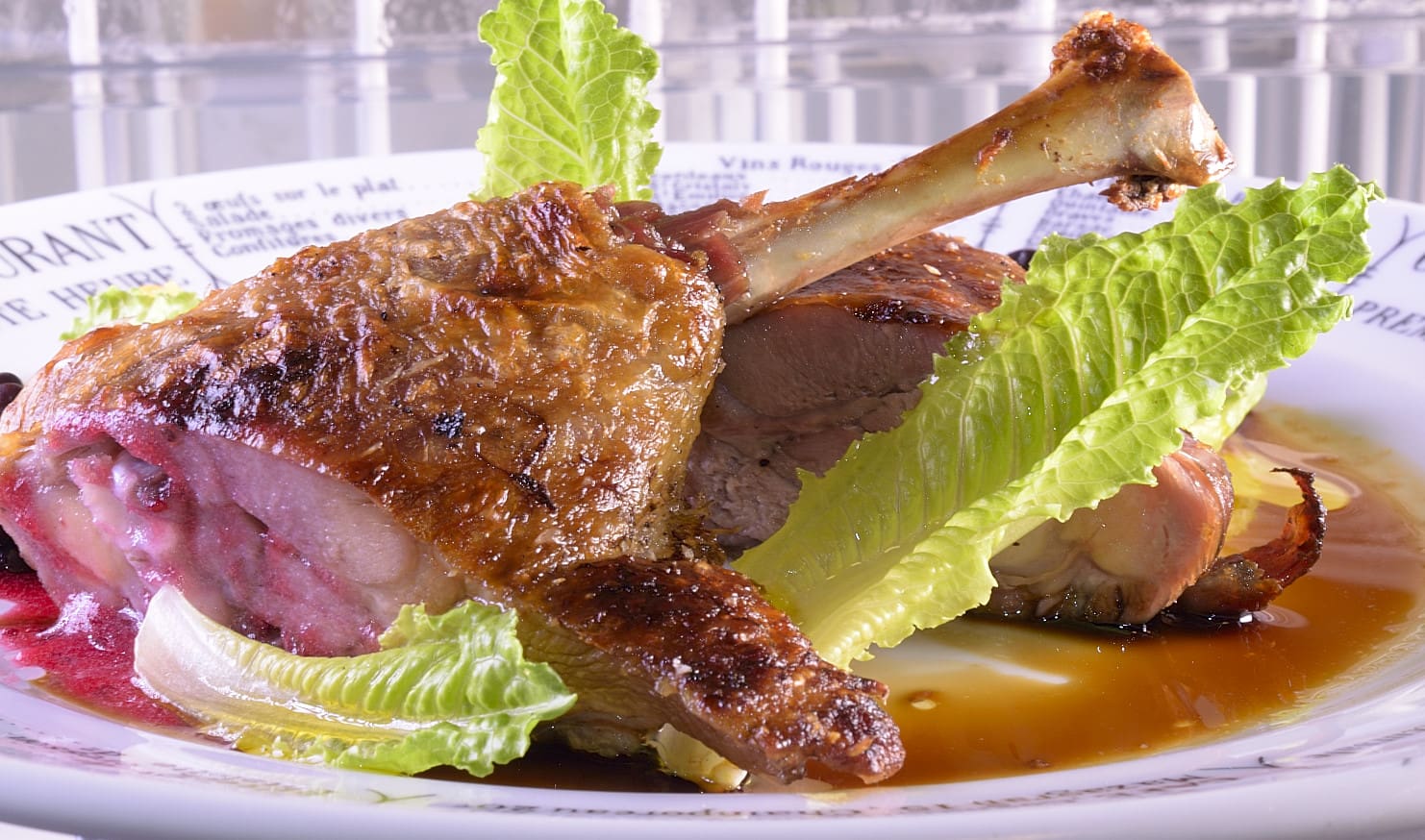
Cut the leg in half, lay the thigh flat on the plate, dip the leg joint into the cranberry sauce and lean it against the thigh.
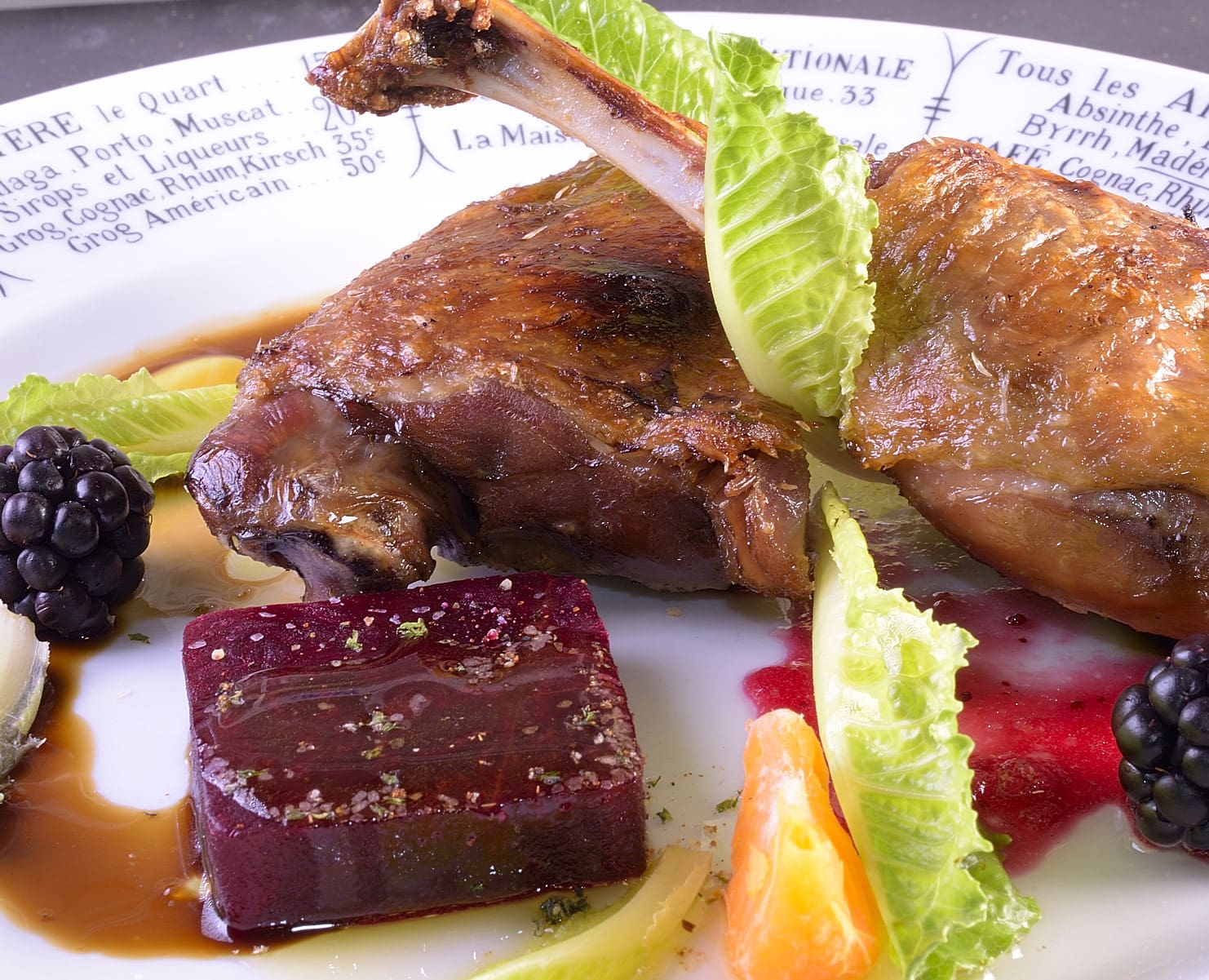
Drizzle a little extra virgin olive oil on the beet and sprinkle with desired seasonings.

and there you have it!
Norm King
Be sure to visit us on Facebook at https://www.facebook.com/groups/272128179509149
